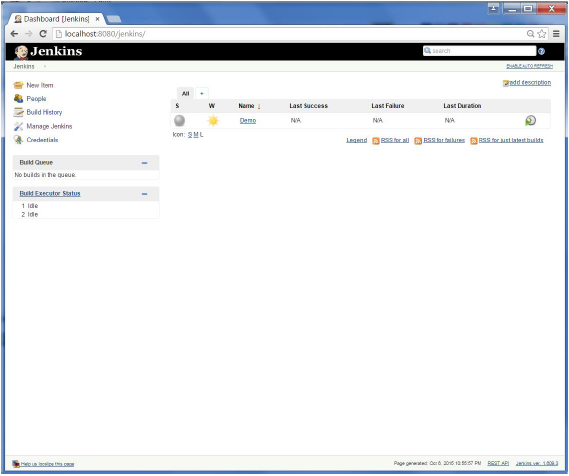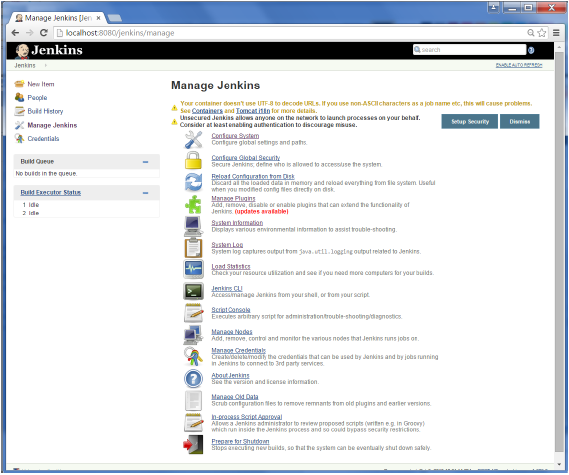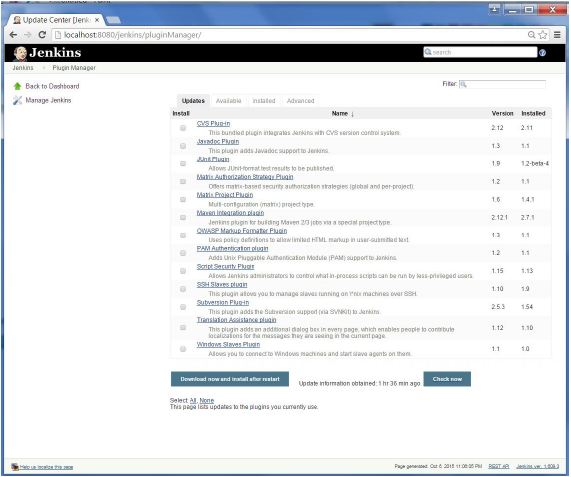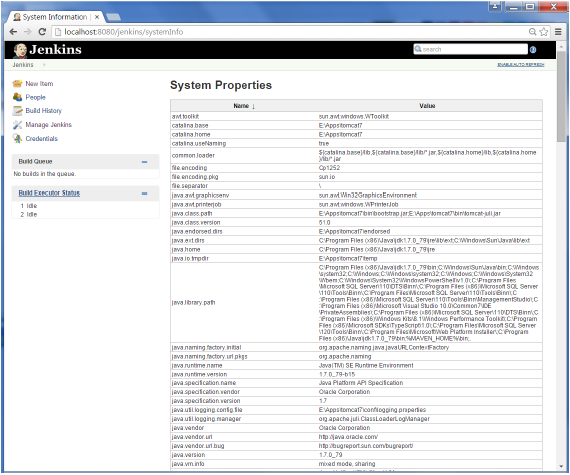Jenkins - Management
To manage Jenkins, click on the ‘Manage Jenkins’ option from the left hand menu side.
So one can get the various configuration options for Jenkins by clicking the ‘Manage Jenkins’ option from the left hand menu side.

You will then be presented with the following screen −

Some of the management options are as follows −
Configure System
This is where one can manage paths to the various tools to use in builds, such as the JDKs, the versions of Ant and Maven, as well as security options, email servers, and other system-wide configuration details. When plugins are installed. Jenkins will add the required configuration fields dynamically after the plugins are installed.
Reload Configuration from Disk
Jenkins stores all its system and build job configuration details as XML files which is stored in the Jenkins home directory. Here also all of the build history is stored. If you are migrating build jobs from one Jenkins instance to another, or archiving old build jobs, you will need to add or remove the corresponding build job directories to Jenkins’s builds directory. You don’t need to take Jenkins offline to do this—you can simply use the “Reload Configuration from Disk” option to reload the Jenkins system and build job configurations directly.
Manage Plugin
Here one can install a wide variety of third-party plugins right from different Source code management tools such as Git, Mercurial or ClearCase, to code quality and code coverage metrics reporting. Plugins can be installed, updated and removed through the Manage Plugins screen.

System Information
This screen displays a list of all the current Java system properties and system environment variables. Here one can check exactly what version of Java Jenkins is running in, what user it is running under, and so forth.
The following screenshot shows some of the name-value information available in this section.

System Log
The System Log screen is a convenient way to view the Jenkins log files in real time. Again, the main use of this screen is for troubleshooting.
Load Statistics
This pages displays graphical data on how busy the Jenkins instance is in terms of the number of concurrent builds and the length of the build queue which gives an idea of how long your builds need to wait before being executed. These statistics can give a good idea of whether extra capacity or extra build nodes is required from an infrastructure perspective.
Script Console
This screen lets you run Groovy scripts on the server. It is useful for advanced troubleshooting since it requires a strong knowledge of the internal Jenkins architecture.
Manage nodes
Jenkins is capable of handling parallel and distributed builds. In this screen, you can configure how many builds you want. Jenkins runs simultaneously, and, if you are using distributed builds, set up build nodes. A build node is another machine that Jenkins can use to execute its builds.
Prepare for Shutdown
If there is a need to shut down Jenkins, or the server Jenkins is running on, it is best not to do so when a build is being executed. To shut down Jenkins cleanly, you can use the Prepare for Shutdown link, which prevents any new builds from being started. Eventually, when all of the current builds have finished, one will be able to shut down Jenkins cleanly.
No comments:
Post a Comment